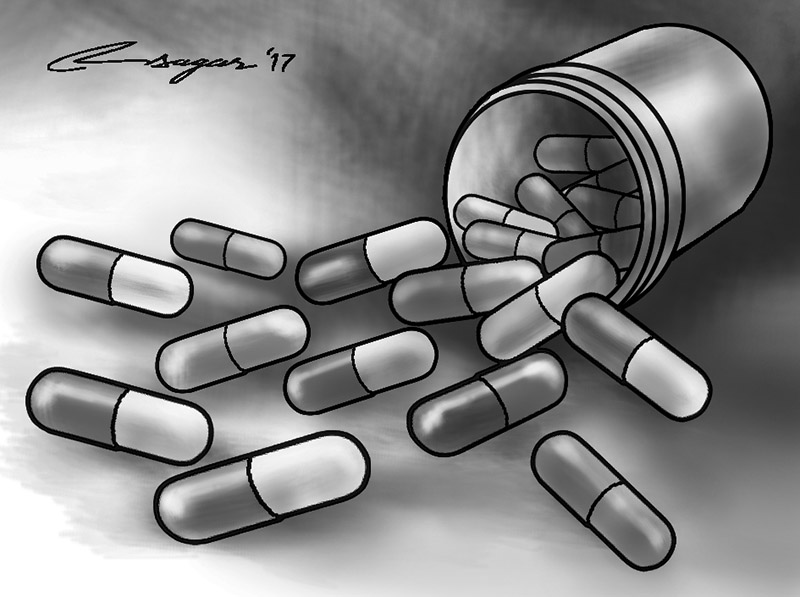Counterfeit medicines: Threat to public health
Many of these anti-counterfeiting technologies are being used by pharmaceutical companies to ensure distribution of the authentic product from the manufacturing site to the pharmacy
Counterfeit drugs are health hazards and are hard to spot without testing in a lab. They often lack active pharmaceutical ingredients and may even contain other harmful ingredients like lead paint and poison. They are also illegal and possibly dangerous. Counterfeits are usually manufactured in substandard environments and they’re made by organizations which typically do not adhere to FDA standards or take other appropriate steps to ensure the medicines are safe and effective.
Counterfeiting can apply to both branded and generic products and counterfeit medicines may include the products with correct ingredients but fake packaging, with the wrong ingredients, without active ingredients, with insufficient active ingredients and with manipulated expiry dates.
The main danger of counterfeit medicines is you don’t know what’s in them. Sometimes they contain dangerous toxins that can be harmful if consumed. They can also contain too much of an active medicine, which can be dangerous to your health and may even lead to death. Another concern about taking counterfeit medicines is that you may not be getting the health benefits you expect from the products. For example, a drug you count on to lower your cholesterol level may not actually provide any benefit at all because it doesn’t contain the correct ingredients. You might notice that a medicine you are taking has a different taste, consistency, or appearance than usual. You might also notice that you have a different reaction to the drug, or that it’s not working the way it usually does.
The problem of counterfeit drugs is global in nature. Although it is difficult to obtain precise figures, estimates put counterfeits at more than 10 percent of the global medicines market. It is known to affect both developed and developing countries. A WHO survey of counterfeit medicines reports from 20 countries between January 1999 and October 2000 found that 60 percent of counterfeit medicines cases occurred in poor countries and 40 percent in industrialized countries. The largest numbers of reports are related to antibiotics, antiprotozoal, hormones and steroids. The problem is more pronounced in countries where the manufacture, importation, distribution, supply and sale of drugs are less regulated and enforcement is weak. Drugs like Viagra and pain killers were the prime focus for counterfeiters until the last 10 years or so, but now people are involved in faking a variety of drugs, including cancer drugs, blood pressure medicines and cholesterol medicines. According to the FDA, drugs like Ambien, Xanax, Lexapro, and Ativan are also being faked. In the last year, the agency said some individuals who ordered these drugs online received drugs made of Haldol, a powerful anti-psychotic drug that can be deadly. The most commonly-counterfeited drug continues to be Viagra, which is manufactured by drug maker behemoth Pfizer.
For some pills, it’s almost impossible to tell what’s real and what’s fake. The best indication would be if it tastes different, appears different in color, or reacts differently in the way it dissolves or breaks. If anything appears abnormal, people should call their pharmacy or doctor immediately.
Many of these anti-counterfeiting technologies are being used by pharmaceutical companies to ensure distribution of the authentic product from the manufacturing site to the pharmacy. When these technologies are widely used for pharmaceutical packages, pharmacists will be able to quickly authenticate the unique identification number to determine whether the number is genuine and the product is legitimate. Use of imaging and/or scanning technologies coupled with software that prints a description of the medication’s appearance on the pharmacy label or receipt also would reduce the chances of dispensing a counterfeit medication.
FDA provides guidance to pharmaceutical manufacturers on the use of physical–chemical identifiers (PCIDs) in solid oral dosage forms. A PCID is “a substance or combination of substances possessing unique physical or chemical properties that unequivocally identifies and authenticates a drug product of dosage form. Examples include inks, flavors, and chemical tags that are detectable analytically using techniques such as infrared, ultraviolet, and fluorescence detectors or visually using magnification.
Pharmacists, technicians, student pharmacists, and patients need to be educated about counterfeit medications. Professional materials are available from the Partnership for Safe Medicines. Additional practical tips for identifying and preventing distribution of counterfeit medications are available from the World Health Organization. Pharmacists should report suspect counterfeit medications through Medwatch. Some pharmaceutical companies will send an investigator to a pharmacy to examine suspicious products and conduct authentication tests if requested. Suspicious products should be removed from the dispensing area immediately until further instruction is given from Regulatory Authority.
Hence, pharmacists play a critical role in preventing the distribution of counterfeit medications. By raising awareness, identifying education materials with practical suggestions, and implementing recommendations to ensure the integrity of the supply chain, pharmacists can help address the threat of counterfeit medications.
Bartaula is President of Forum For Pharmacy, Kathmandu University






